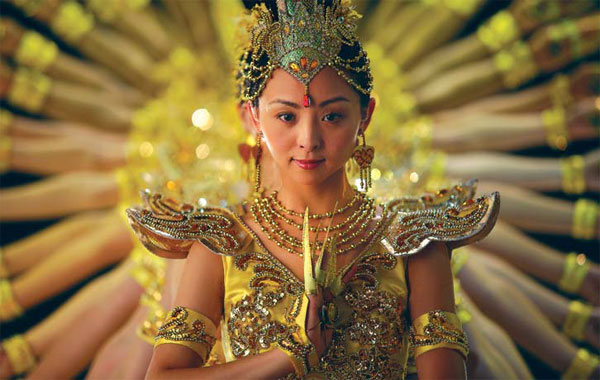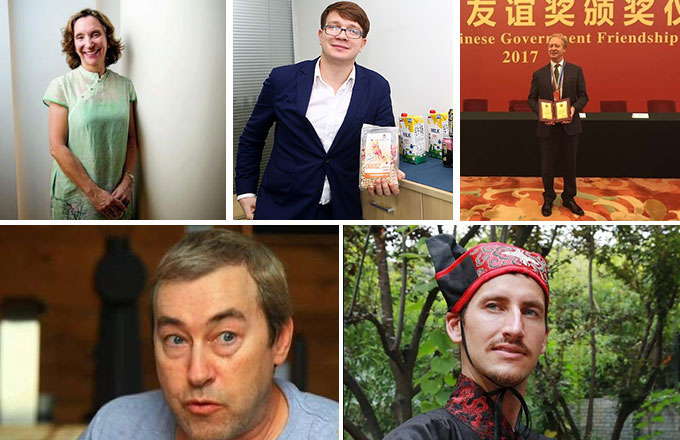'One thousand hands' dance to success in silence
Nine years ago, Cheng Cheng's dream was to take part in The One Thousand Hand Bodhisattva Dance after seeing the China Disabled People's Performing Arts Troupe perform it on TV.
Today, the 21-year-old from Xuzhou, Jiangsu province, has realized her dream.
Now the leader of the dance troupe, Cheng lost her hearing due to use of ototoxic drugs when she was around one year old. She cannot hear or talk, but she expresses herself through her dancing. She started dancing seriously when she was 8, and seven years of dawn-to-dusk practice saw her go from a seat in the audience to a place in the spotlight when she was selected for the China Disabled People's Performing Art Troupe at an open audition in 2007.
Dancing is difficult for the hearing-impaired as they cannot hear the music. And requiring over 20 performers to dance in time to the same beat is even more of a challenge.
The One Thousand Hand Bodhisattva Dance shows that the silent and simple are often the most powerful. With 21 performers standing in a line, the only thing you can see from the front is their arms and the pictures of eyes on their palms. To allow the dancers to feel the rhythm of the music accurately the director Zhang Jigang has sign language teachers transmit information to the performers.
At the performances, there are four sign language teachers standing at the four angles. The teachers' hands become the deaf actors' "ears" and the sign language conveys the rhythm of the music. "But when we practice, we put our ears on the speakers to feel the beat," said Cheng Cheng.
The show shot to fame when it was performed on the China Central Television Spring Festival Gala in 2005. But even before it became a household name in China, it was already known around the world after it was included as part of the closing ceremony of the 2004 Athens Paralympic Games. At that time, the eight-minute-long performance amazed the whole world.
The China Disabled People's Performing Arts Troupe was founded in 1987 for hearing impaired, visually impaired, and/or physically impaired people with a love of dance and performing.
The troupe travels around the world performing The One Thousand Hand Bodhisattva Dance and other dance routines including Dance of the Butterfly Lovers performed by two actors with hearing impairments and the Code of Life by a performer who is physically impaired.
To See the Spring is a dance performed by those who are visually impaired and the main actor for Happy Life on a Farm is physically disabled.
Wang Jing, the director of CDPPAT, said that when traveling all of the performers look out for one another.
"There is a saying in the troupe among the members - I am your eyes, and you are my ears; I am your mouth, and you are my legs," she said.
This message is also part of the show Scent of a Woman, in which a blind guitarist dances a tango with one of the hearing impaired dancers.
The show sends the message of the love that the physically challenged young people have towards their life and others," said Li Jing, the troupe's dance teacher.
"The actor you see on the stage has no background in dance. He practiced over six months to learn the tango. On stage, the visually impaired actor leads the hearing impaired actress in following the beat and rhythm, and the hearing impaired dancer helps the visually impaired actor with their position on the stage and their direction of movement," she said.
"This kind of help, love and care is also the message we want to send to the world to create a more inclusive environment for those with physical challenges," she adds.
yangyao@chinadaily.com.cn
|
The dance of The One Thousand Hand Bodhisattva staged by the China Disabled People's Performing Arts Troupe has been internationally acclaimed. Provided to China Daily |



















